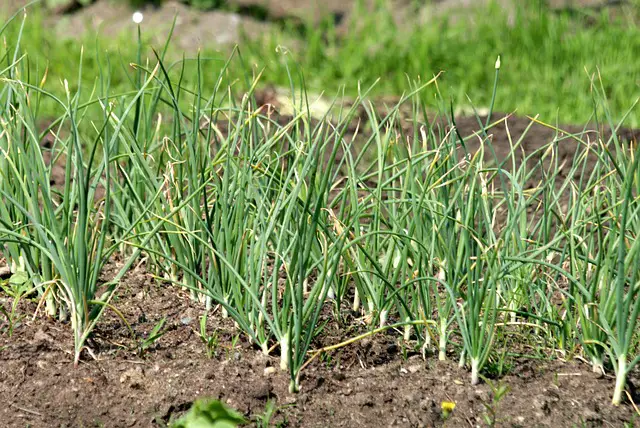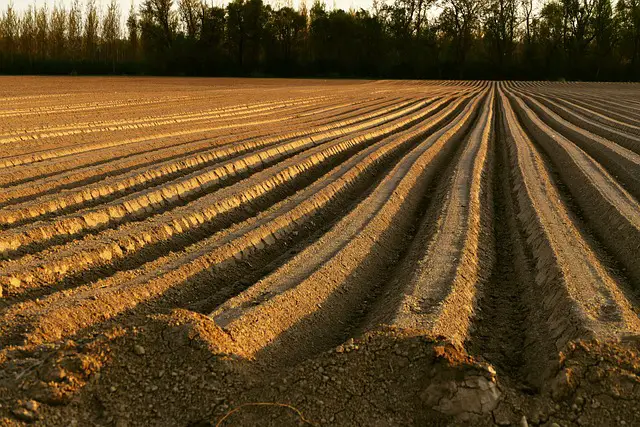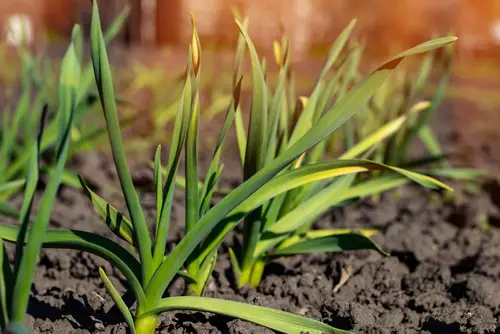Garlic is a versatile and tasty ingredient that is used in many dishes around the world. If you live in Central Texas and want to grow your own garlic, you may be wondering when the best time is to plant it. Fortunately, there are some tips and guidelines that can help you determine the best time to plant garlic in Central Texas.
One important factor to consider when planting garlic is the variety of garlic that you want to grow. There are many different varieties of garlic, each with its own unique flavor and growing requirements.
Some varieties are better suited for growing in Central Texas than others, so it’s important to do your research and choose a variety that will thrive in your area. Once you have chosen your variety, you can start planning when to plant it based on the weather and growing conditions in your area.
Key Takeaways
- Choosing the right variety of garlic is important for successful growth in Central Texas.
- Planting garlic in Central Texas is typically done in mid-October, but can be done as late as early December.
- Proper soil preparation, watering, and fertilization are key factors in growing healthy garlic.
More on this category:
- When to Plant Fruit Trees in Utah?
- When to Plant Fruit Trees in Tennessee?
- When to Plant Grass Seed in Houston?
Understanding Garlic Varieties

Garlic comes in two main varieties: softneck and hardneck. Softneck garlic is the most commonly found variety in grocery stores and is often used for braiding. It has a mild flavor and a longer shelf life than hardneck garlic.
On the other hand, hardneck garlic has a stronger flavor and is better suited for colder climates. It is also easier to peel than softneck garlic.
There are many different types of garlic within each variety, each with its own unique flavor and characteristics. Some popular varieties of softneck garlic include Creole and Italian garlic.
Creole garlic is known for its spicy, bold flavor and is often used in Cajun and Creole cooking. Italian garlic, on the other hand, has a milder flavor and is often used in Mediterranean cuisine.
Hardneck garlic varieties include Rocambole, Porcelain, and Purple Stripe. Rocambole garlic has a rich, complex flavor and is often used in French cuisine. Porcelain garlic has a mild, sweet flavor and is often used in Asian cuisine. Purple Stripe garlic has a spicy, robust flavor and is often used in Eastern European dishes.
Another type of garlic is elephant garlic, which is actually a type of leek. It has a mild, sweet flavor and is often used as a substitute for garlic in recipes.
When deciding which variety of garlic to plant, it is important to consider the climate and growing conditions in your area. Hardneck varieties are better suited for colder climates, while softneck varieties do well in warmer climates.
Additionally, some varieties may have a longer growing season than others, so it is important to choose a variety that will have enough time to mature before the first frost.
When to Plant Garlic in Central Texas
Garlic is a great addition to any garden, and in Central Texas, it can be grown all winter long. While there is some flexibility in planting time, mid-October is the best time to plant garlic in Central Texas.
Planting at this time gives the garlic enough time to establish roots before the first frost, which usually occurs in late November or early December.
Planting garlic too early can be problematic, as it may sprout before winter and be damaged by cold snaps. On the other hand, planting garlic too late may not give it enough time to establish roots before the first frost. Therefore, mid-October is the ideal time to plant garlic in Central Texas.
It is important to note that the first frost date can vary from year to year, so it is essential to keep an eye on the weather forecast. If the first frost is expected earlier than usual, it may be necessary to plant garlic a bit earlier than mid-October.
Conversely, if the first frost is expected later than usual, garlic can be planted a bit later than mid-October.
In addition to the ideal planting time, it is also important to consider the climate when planting garlic. Garlic prefers well-drained soil and full sun, so it is essential to choose a location that meets these requirements. It is also important to fertilize the soil before planting, as garlic requires a lot of nitrogen during the growth season.
Choosing the Right Location

When it comes to growing garlic in Central Texas, choosing the right location is crucial for a successful harvest. Garlic plants require full sun, which means they need at least six hours of direct sunlight per day. Therefore, it is essential to choose a location that receives plenty of sunlight.
The best location for planting garlic is in a vegetable garden that has loose, well-draining soil. Garlic prefers soil that is rich in organic matter and has a pH between 6.0 and 7.0. If your soil is too acidic, you can add lime to raise the pH level.
It is also important to choose a location that is not prone to flooding. Garlic plants do not tolerate wet feet, and the bulbs can rot if they are planted in soil that is too wet. Therefore, it is best to avoid planting garlic in low-lying areas or areas that are prone to flooding.
In addition to these factors, it is also important to choose a location that is easy to access. Garlic plants require regular maintenance, such as watering, weeding, and fertilizing. Therefore, it is best to choose a location that is easy to reach and maintain.
Preparing the Soil
Before planting garlic in Central Texas, it is important to prepare the soil properly. Garlic prefers well-drained soil that is loose and rich in organic matter. If the soil is too compacted or heavy, it can lead to poor drainage and increase the risk of rotting.
One way to improve the soil structure is by adding compost. Compost helps to increase soil fertility and improve soil structure. It also helps to retain moisture in the soil, which is important for the growth of garlic.
If the soil is sandy, adding organic matter can also help to improve its water-holding capacity. Sandy soil drains quickly, which can lead to water stress for garlic plants. Adding compost or other organic matter can help to retain moisture in sandy soil and improve its ability to hold water.
It is important to ensure that the soil is well-draining, as garlic bulbs can rot in waterlogged soil. If the soil is heavy or poorly drained, adding sand or perlite can help to improve drainage.
Planting the Garlic
When it comes to planting garlic in Central Texas, there are a few things to keep in mind. Garlic can be grown from either cloves or seed. However, planting cloves is the most common method used by gardeners.
To plant garlic, choose a location that receives full sun. Garlic can be planted among other plants for its attractive winter foliage. Make sure to prepare the soil before planting. Loose and well-draining soil is ideal for growing garlic.
Plant the garlic cloves or seed in the soil with the pointed end facing up. Plant the cloves or seed about 2-3 inches deep and 8 inches apart. Space rows about 12 inches apart.
Garlic is a perennial plant, which means it will come back year after year. To ensure that the garlic has enough space to grow, make sure to give each clove or seed enough space to develop roots.
It is important to note that garlic requires a lot of nitrogen fertilizer during the growing season. Intercropping garlic with other nitrogen-loving plants can help provide the necessary nutrients to the garlic.
In Central Texas, the best time to plant garlic is between mid-October and early December. Planting earlier or later than this time frame can result in compromised clove development.
By following these simple steps, gardeners can successfully grow garlic in Central Texas.
Watering and Fertilization

Garlic requires moist soil for optimal growth. In Central Texas, rainfall is usually sufficient to meet the water needs of garlic. However, during dry spells, it is important to water the garlic plants regularly.
It is recommended to water deeply once a week rather than shallowly every day. This helps the garlic roots grow deeper into the soil and become more drought-resistant.
In addition to water, garlic plants also require proper fertilization. Nitrogen is an essential nutrient for garlic growth. It is recommended to apply nitrogen fertilizer to the soil before planting garlic in the fall. Fish emulsion is a good source of nitrogen and can be applied to the soil according to the package instructions.
It is important to avoid over-fertilizing garlic plants with nitrogen as it can lead to excessive foliage growth at the expense of bulb development. A balanced fertilizer with a ratio of 8-2-4 or similar can be applied in mid-September or a month before planting to allow the compost and fertilizer to age and blend in the soil.
Harvesting and Storing Garlic
Harvesting garlic is a simple process that requires a bit of patience. The best time to harvest garlic is when the leaves start to turn yellow and dry up. This usually happens in late May or early June in Central Texas.
To harvest garlic, carefully loosen the soil around the bulbs using a garden fork or spade. Be careful not to damage the bulbs or bruise the cloves. Once the bulbs are out of the ground, shake off any excess soil and lay them out in a dry, well-ventilated area to cure for two to three weeks.
Curing is an important step in the garlic harvesting process. It allows the garlic to dry out and develop a papery skin that will protect it during storage. During the curing process, the garlic bulbs should be kept out of direct sunlight and in a cool, dry place with good air circulation.
After the garlic has cured, it is time to clean and store it. First, remove the outer layers of papery skin from the bulbs. Then, separate the bulbs into individual cloves. Choose only the largest, healthiest, and mold-free cloves for planting next year.
To store garlic, keep the cloves in a cool, dry, and dark place. A pantry or a root cellar is an ideal location. Storing garlic in the refrigerator is not recommended because the cold and humidity can cause the cloves to sprout or become moldy.
Common Challenges and Solutions
Growing garlic in Central Texas can be challenging due to the region’s warm climate and unpredictable weather patterns. Here are some common challenges that garlic growers face and solutions to overcome them:
1. Frost

Garlic requires a period of cold temperatures to develop properly. However, frost can damage or kill young garlic plants. To protect garlic from frost, plant it in the fall about two to four weeks before the first expected frost.
Cover the plants with a layer of mulch to keep the soil warm and protect the plants from freezing temperatures. If frost is predicted, cover the plants with a cloth or blanket to provide extra protection.
2. Dry Spell
Garlic needs consistent moisture to grow properly. However, Central Texas experiences periods of drought, which can cause garlic to wilt or die. To prevent this, water garlic regularly, especially during dry spells. Use a garden fork to loosen the soil around the plants to help the water penetrate deeper into the soil.
3. Scapes
Garlic produces a flower stalk called a scape, which can take energy away from the bulb. To encourage larger bulbs, it’s best to remove the scapes when they appear. Cut the scapes off just above the top leaf to prevent damage to the plant. Scapes can be used in cooking and have a milder garlic flavor than the bulbs.
Frequently Asked Questions
What is the best garlic variety for Central Texas?
Softneck garlic is the best garlic variety for Central Texas due to its ability to thrive in warmer climates. Softneck garlic stores longer and is commonly found in grocery stores. Hardneck garlic is more suitable for colder climates and has a shorter shelf life.
When should I plant garlic in Texas?
The ideal time to plant garlic in Texas is in mid-October to the end of November, before the first heavy freeze. Planting garlic in the winter and spring is also possible, but it is important to plant the cloves in the ground about two to four weeks before the first expected frost.
How long does it take for garlic to grow in Texas?
Garlic typically takes about 8-9 months to grow in Texas. It is important to keep the soil moist and well-drained during the growing season.
Can garlic be planted in February in Texas?
Garlic can be planted in February in Texas, but it may not produce a harvest before the first frost arrives in the fall. It is best to plant garlic in mid-October to the end of November for optimal growth and harvest.
What are some companion plants for garlic?
Some companion plants for garlic include tomatoes, peppers, and lettuce. These plants help repel pests and attract beneficial insects to the garden.
How can I grow garlic in containers in Texas?
To grow garlic in containers in Texas, choose a container that is at least 6 inches deep and has drainage holes. Fill the container with well-draining soil and plant the garlic cloves about 2 inches deep. Keep the soil moist and place the container in a sunny location.

Hey, I’m Lisa and I’ve been an avid gardener for over 30 years. I love writing, talking and living in the garden! Feel free to connect with me on my socials below

